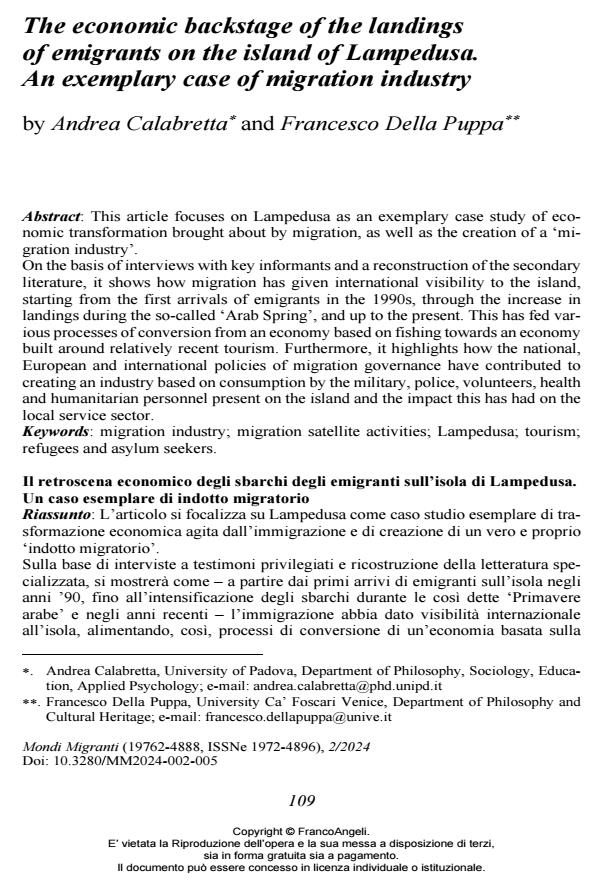Il retroscena economico degli sbarchi degli emigranti sull’isola di Lampedusa. Un caso esemplare di indotto migratorio
Journal title MONDI MIGRANTI
Author/s Andrea Calabretta, Francesco Della Puppa
Publishing Year 2024 Issue 2024/2
Language English Pages 26 P. 109-134 File size 252 KB
DOI 10.3280/MM2024-002005
DOI is like a bar code for intellectual property: to have more infomation
click here
Below, you can see the article first page
If you want to buy this article in PDF format, you can do it, following the instructions to buy download credits

FrancoAngeli is member of Publishers International Linking Association, Inc (PILA), a not-for-profit association which run the CrossRef service enabling links to and from online scholarly content.
Andrea Calabretta, Francesco Della Puppa, The economic backstage of the landings of emigrants on the island of Lampedusa. An exemplary case of migration industry in "MONDI MIGRANTI" 2/2024, pp 109-134, DOI: 10.3280/MM2024-002005